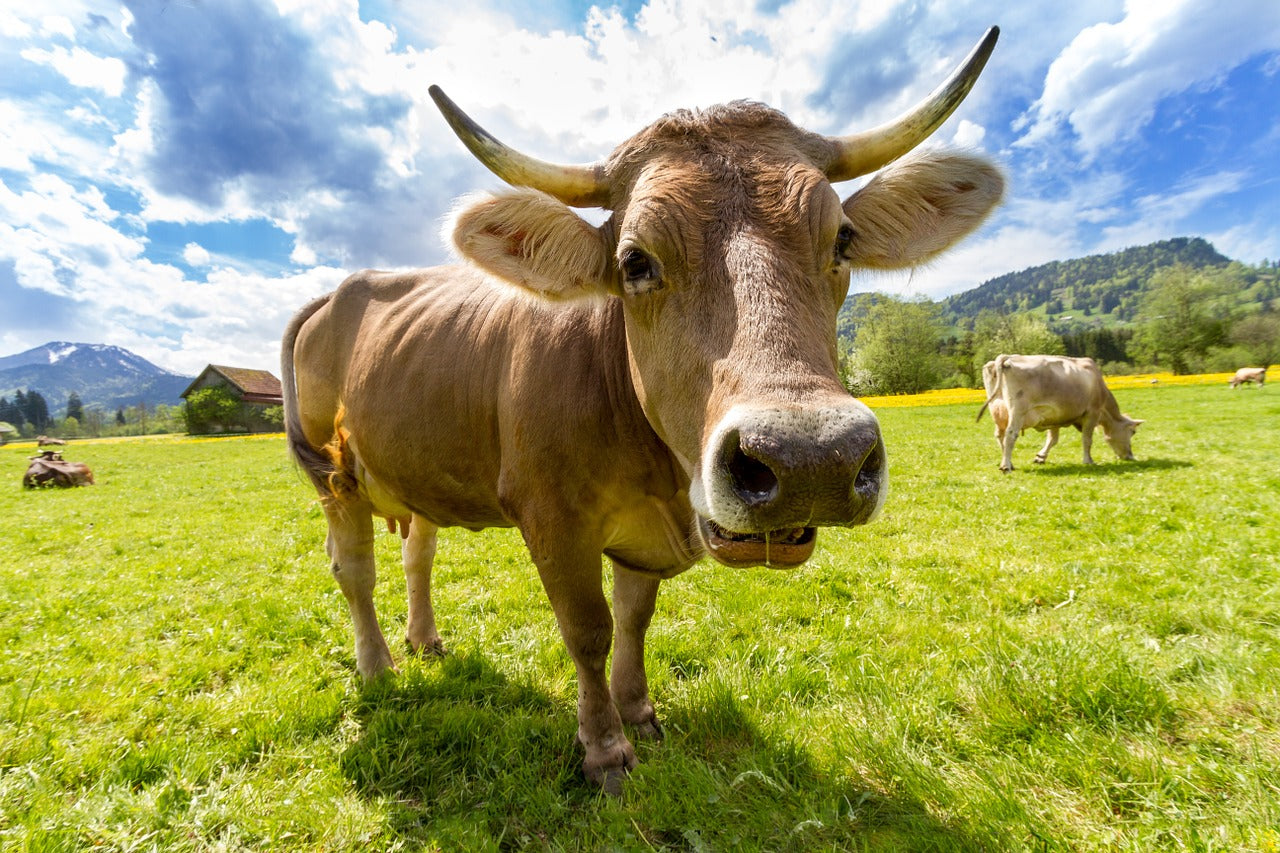
What’s the Difference Between Grass-fed, Organic, and Other Marketing Labels?
If you are interested in eating healthy and consume meat, dairy, and/or eggs, the chances are you have encountered marketing labels such as organic, grass-fed, cage-free, natural, etc. So what do those terms really mean, and which one really is best in terms of their impact on our health, the health of the environment, and the health of the animals we are consuming? And how do they really compare to animals raised conventionally?
Here is a quick and easy guide that will help answer that question:
- Animals raised conventionally spend their lives confined in large numbers within feedlots and have a grain-based diet. They are also given antibiotics to fight off the diseases associated with living in cramped quarters. And with the exception of dairy cows and chickens raised in Canada, they are often given growth hormones so that they are able to grow faster and fatter.
- In contrast, grass-fed or pasture-raised animals are given access to pasture and graze on fresh grass, hay, forage, or insects, and therefore have a much more natural diet. As a result, the meat, milk, and eggs from grass-fed animals are leaner and have much higher levels of omega-3s (which help lower the risk of heart disease, stroke and type 2 diabetes), conjugated linoleic acid (which has been linked the prevention of colorectal and breast cancers, diabetes and heart disease), vitamins and other nutrients than conventional meat, milk, and eggs. For example, grass-fed beef has 7 times the level of omega-3s than grain-fed beef, and grass-fed milk has 2 times the level of omega-3s than conventional milk.
It is possible that the grass and hay could be sprayed with pesticides and that the animals could be given antibiotics or hormones. However, as the animals are able to graze in their natural habitat and have access to open space, they live in much more sanitary conditions and their immune systems are less stressed, and they don’t require artificial assistance. Plus, their natural grazing behaviour helps suppress weeds and support a natural ecosystem, and the solid waste they produce is a natural fertilizer. Consequently, antibiotics, hormones, pesticides, and artificial fertilizers are rarely needed.
- Organic animals eat organic feed (usually corn and grain) and are not given antibiotics or hormones and cannot be directly or indirectly exposed to artificial pesticides, fertilizers, or GMOs or other synthetic chemicals; however, they are not given as much access to pasture and thus spend longer time in confinement. The meat and milk from organic animals also have higher levels of omega-3 and vitamins than conventional meat and milk, but not as high as those coming from grass-fed animals.

- Free-range / free-roaming chickens have partial access to outdoors, but still have a grain-based diet.
- Free run / cage-free eggs come from chickens that are able to move around in open barns with no outdoor access, and have a grain-based diet.
- Unmedicated meat generally means no antibiotics, hormones or steroids have been given to the animal. It doesn’t describe the living conditions of the animal, but it is likely that it is at least free run or cage-free. The animal could also be given conventional feed or organic feed.
- Natural meats mean no additives / preservatives are introduced after the meat / poultry is processed.
So given this, the best choices are:
- Organic grass-fed or pastured beef or poultry
- Organic milk, and preferably from grass-fed cows or goats raised on pasture (I prefer goat’s milk, as it is easier to digest than cow’s milk)
- Organic eggs, and preferably from chickens raised on pasture
Now if you’re convinced that you should be purchasing more organic, grass-fed or pastured meat, dairy, and eggs and but are concerned about the cost of these items, make sure you read my article about how to get organic foods on a budget!
